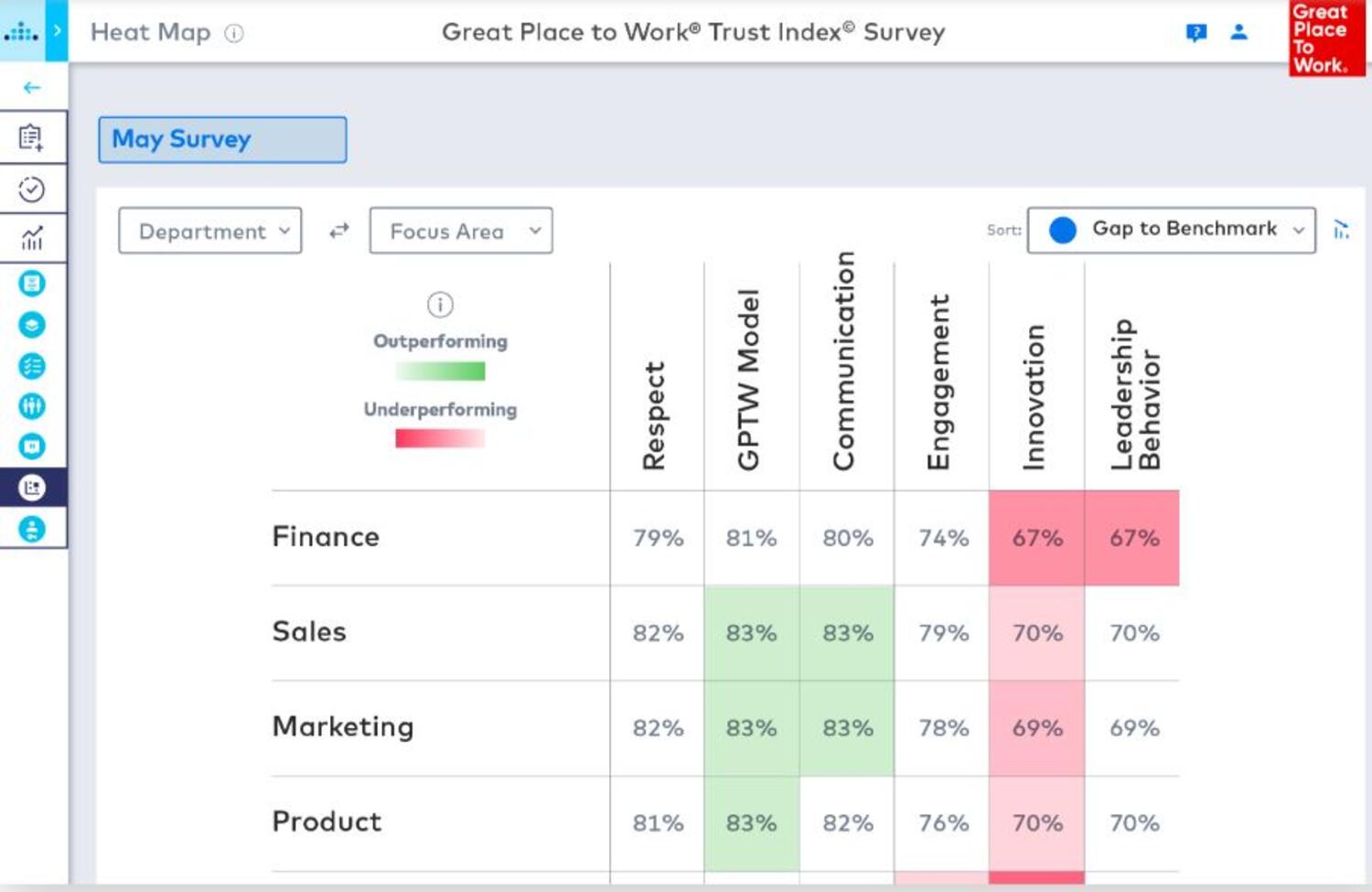
What to work on post-survey employee results
Congratulations on completing your recent employee engagement survey! Getting employee feedback is the first step towards creating a high-trust, high-performing organization.
Now it’s time to:
- Make sense of your data
- Conduct listening sessions
- Decide what focus areas you want to improve on
Focusing on the areas that have the most impact on company culture will increase the likelihood of seeing a tangible ROI. But how do you know which areas those are?
Over the past 11+ years, I’ve worked with hundreds of companies who have used our Trust Index™ employee survey to get feedback and change their cultures. Here’s what I’ve learned about identifying which areas will be most (and least) impactful as you work toward meaningful culture change.
Don’t get distracted by your lowest scoring areas
It may seem counterintuitive, but one of the least effective approaches a company can take is to simply focus on the areas with the lowest scores.
Across companies, employees tend to be most critical about the same topics, including employees at the Fortune 100 Best Companies to Work For®:
- Fair compensation
- Favoritism
- Fair promotions
- Workplace politics
These areas often get the lowest satisfaction marks from employees, regardless of company size or industry.
Low scores in these areas should really only be a focal point if they're low compared to an industry benchmark.
One way to benchmark your employee experience is to compare it against the Fortune 100 Best by using our Trust Index. You may find that what seems like a low score to you is in fact better than many other companies’ scores.
Many companies’ first inclination after seeing their lowest score in these areas is to:
- Increase salaries
- Give bonuses
- Define processes
- Do more staff celebrations
They naturally think these actions are the key to quickly improving their overall employee experience.
While equitable compensation and benefits are essential foundations for employees' well-being, they alone do not have a high impact on overall employee experience.
It’s easy to understand why companies work on these areas: these are also the most common topics employees bring up in listening sessions.
The question many companies fail to ask is, Why are these the areas our employees are bringing up?
In my experience, employees feel safer speaking up about tangible things such as money, IT equipment, facilities, or time-off instead of intangibles such as whether their bosses treat them with respect.
This is why it’s so important to dig deeper in listening sessions to get beneath the surface and learn what the real issues are. There's always more to the employee experience than what employees will initially say.
Focus on high-impact areas
Between our Trust Model methodology and my direct experience working with clients, I've learned that some areas are more impactful than others on company culture.
If most employees have a consistently positive experience in these high-impact areas, then all areas of the employee experience tend to improve (even those unpopular topics above!):
- Showing appreciation for everyone in the organization
- Seeking and responding to peoples’ ideas
- Involving people in important decisions
- Making leaders approachable
- Ensuring employees can get straight answers from leaders
I've seen dozens of companies focus their efforts on just one or two of these high-impact areas consistently with all their leaders. When they do this well, their next employee survey results show a significant overall improvement, especially when it comes to perceptions of compensation and fairness.
Look at gaps between managerial levels
Rather than focusing on survey scores for individual managers, it is more effective to compare scores between manager levels.
Look for differences between the experiences of:
- Your individual contributors
- Their managers
- Other leaders in the organization, including executives
How widely does the workplace experience vary between these groups?
Once you identify that a particular level is having a less positive experience, you can support their leaders to improve. This approach helps to increase leaders’ accountability by clearly showing them how they influence their employees’ experiences.
Our research shows that reducing gaps between managerial levels leads to increased revenue growth and innovation. When experiences vary widely depending on the job level, organizations miss the benefits of agility and adaptability.
Make choices you can sustain
When defining your actions for improvement, it’s important to choose only one or two areas where you can continually support as many leaders as possible to deliver a better experience to their teams. This is far more impactful than a series of one-time initiatives.
Exchange knowledge among leaders
One of the most powerful things I see companies doing is sharing insights from their “pockets of greatness” with the rest of the organization. In almost all companies there are positive examples already happening — you simply need to uncover them!
At the Best Workplaces™, leaders leverage the knowledge of managers who are already creating great experiences for their teams to help other leaders who want to improve.
By evaluating your employee survey results, sharpening your focus and creating a workable action plan, you can drive steady, sustainable, positive change in your company culture.
Emprising™, our culture management platform, allows you to analyze your data to make these kinds of data-driven people decisions. If you’re not analyzing these focus areas in your employee survey, that’s OK. Reach out to us if you would like to learn more about Emprising and our process here







